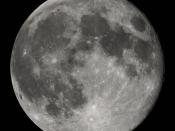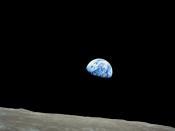NASA astronauts are going back to the moon and when they get there they may need quake-proof housing.
That's the surprising conclusion of Clive R. Neal, associate professor of civil engineering and geological sciences at the University of Notre Dame after he and a team of 15 other planetary scientists reexamined Apollo data from the 1970s. "The moon is seismically active," he told a gathering of scientists at NASA's Lunar Exploration Analysis Group (LEAG) meeting in League City, Texas, last October.
Between 1969 and 1972, Apollo astronauts placed seismometers at their landing sites around the moon. The Apollo 12, 14, 15, and 16 instruments faithfully radioed data back to Earth until they were switched off in 1977.
And what did they reveal?
There are at least four different kinds of moonquakes: (1) deep moonquakes about 700 km below the surface, probably caused by tides; (2) vibrations from the impact of meteorites; (3) thermal quakes caused by the expansion of the frigid crust when first illuminated by the morning sun after two weeks of deep-freeze lunar night; and (4) shallow moonquakes only 20 or 30 kilometers below the surface.
The first three were generally mild and harmless. Shallow moonquakes on the other hand were doozies. Between 1972 and 1977, the Apollo seismic network saw twenty-eight of them; a few "registered up to 5.5 on the Richter scale," says Neal. A magnitude 5 quake on Earth is energetic enough to move heavy furniture and crack plaster.
Furthermore, shallow moonquakes lasted a remarkably long time. Once they got going, all continued more than 10 minutes. "The moon was ringing like a bell," Neal says.
On Earth, vibrations from quakes usually die away in only half a minute. The reason has to do with chemical weathering, Neal explains: "Water weakens stone, expanding the...

![[Portrait of Ralph Burns, Edwin A. Finckel, George Handy, Neal Hefti, Johnny Richards, and Eddie Sauter, Museum of Modern Art, New York, N.Y., ca. Mar. 1947] (LOC)](https://s.writework.com/uploads/3/39226/portrait-ralph-burns-edwin-finckel-george-handy-neal-hefti-thumb.jpg)
